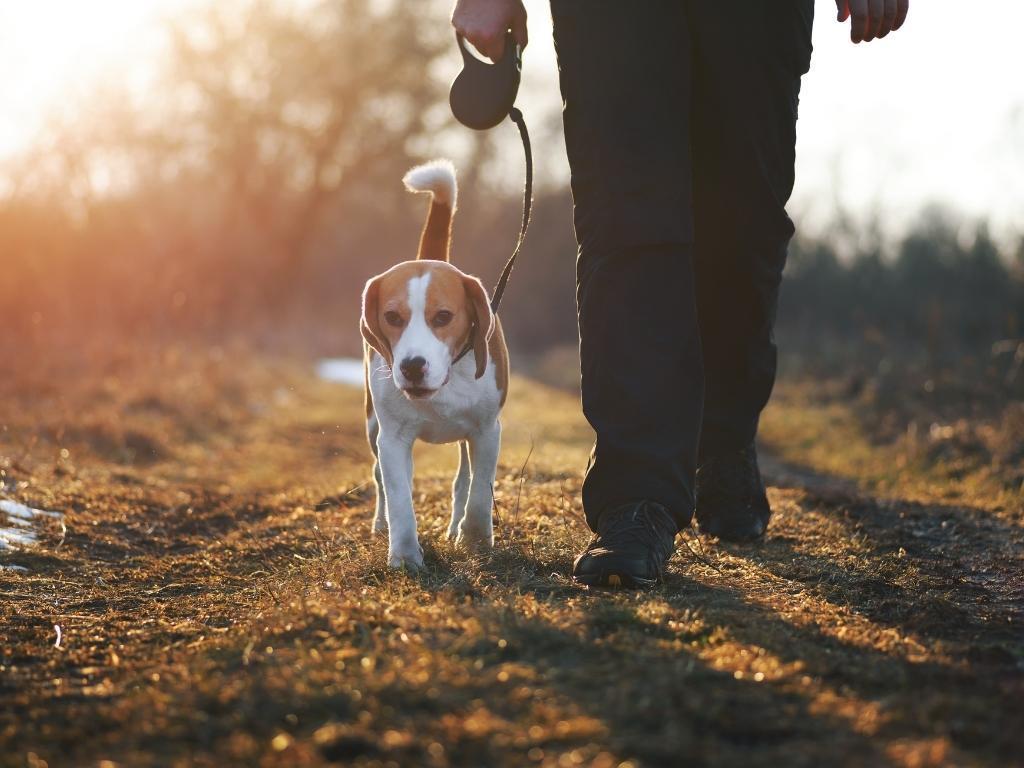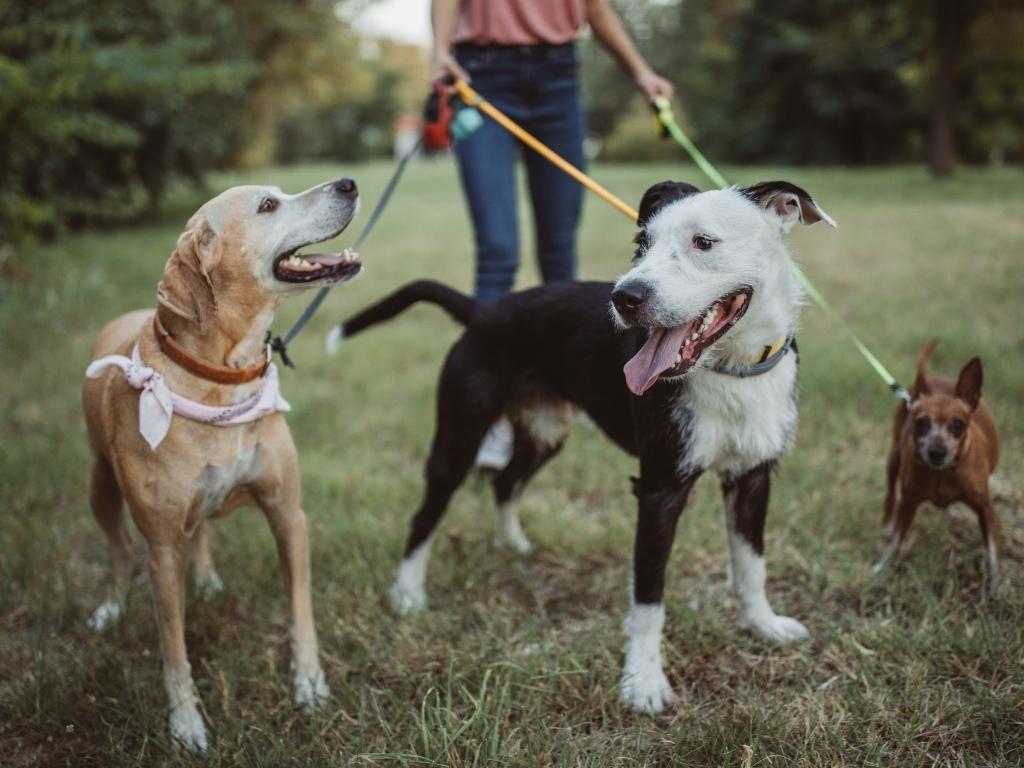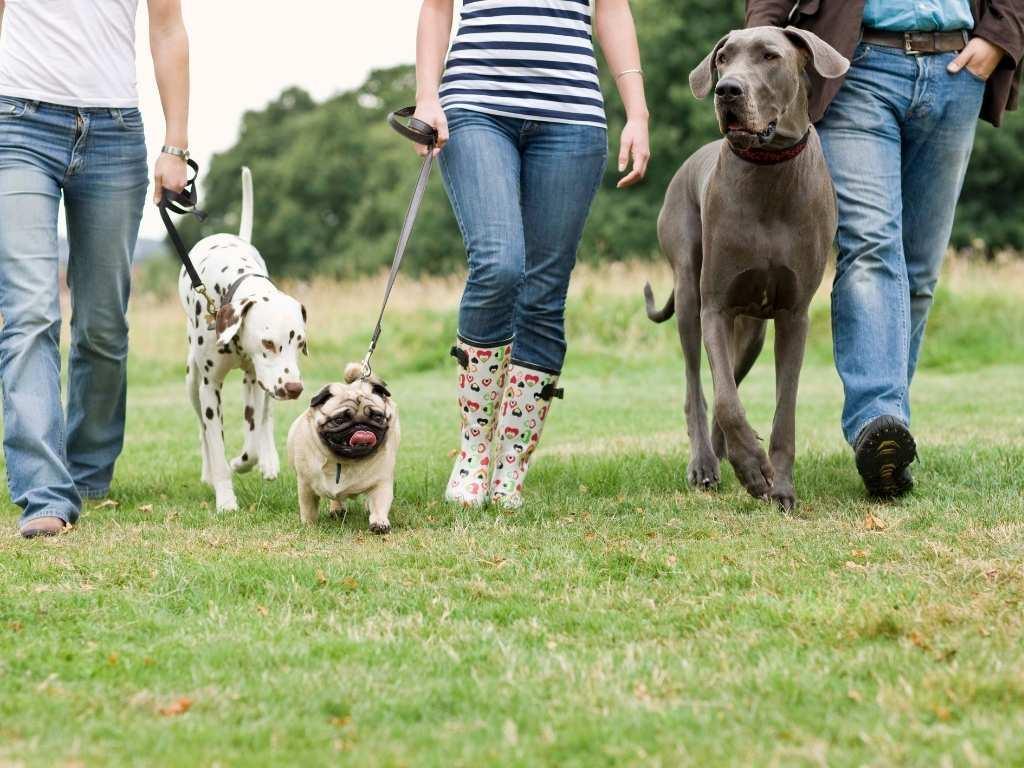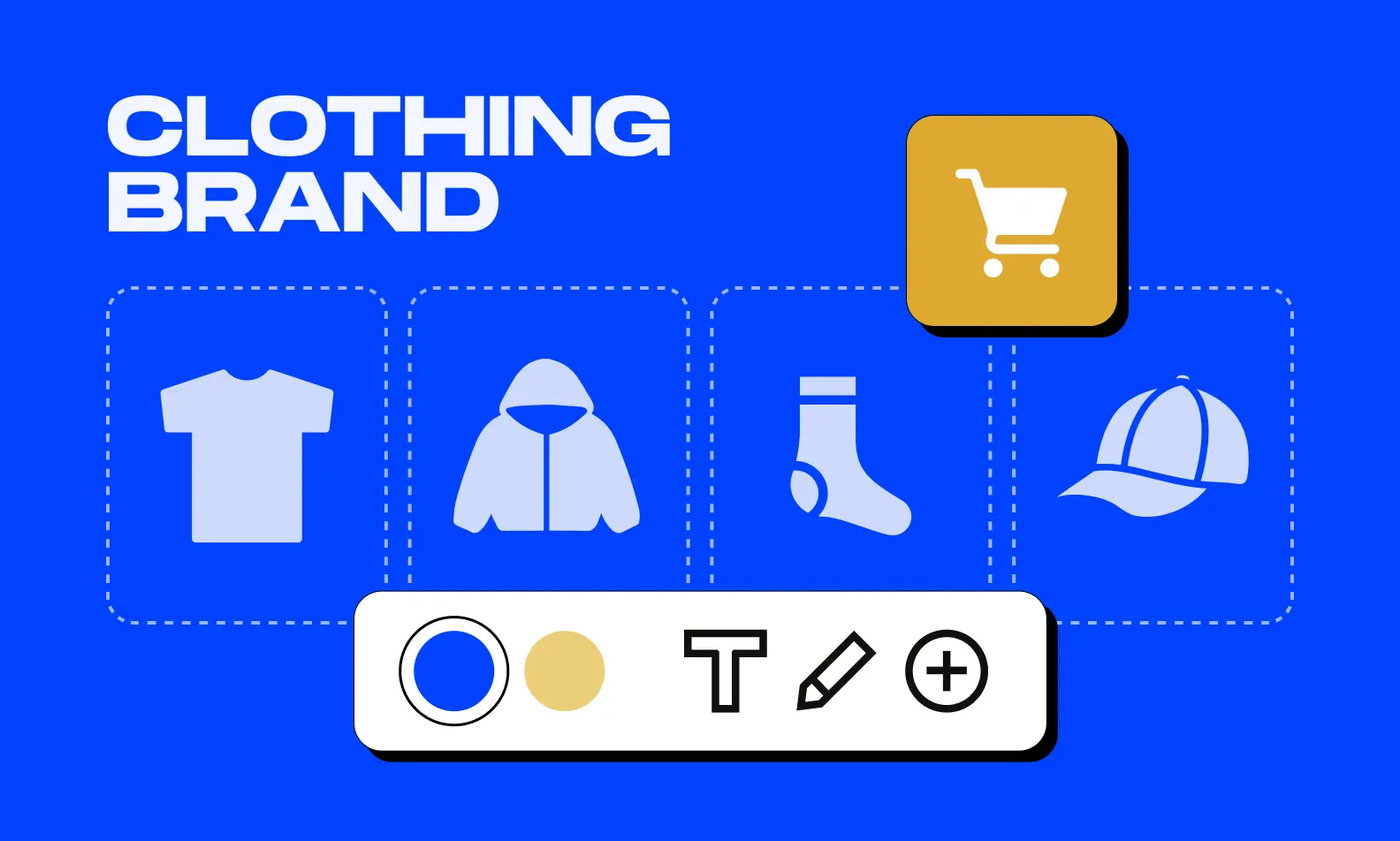Do you love dogs and can spend your entire day with them? What if we told you that you could get paid to be around your favorite animals? If you’ve ever thought about how to start a dog-walking business, you’re in the right place! Imagine you wake up, grab a coffee, put on your sneakers, and head outside to spend the day with happy, tail-wagging dogs. Sounds like a dream job, right?
Well, it’s not just a dream but it’s a real business, and you can start it with minimal investment. In this guide, we’ll walk (pun intended) through everything you need to know about how to start a dog-walking business. So, ready to learn how to start a dog-walking business and get paid to do something you love? Let’s dive in!

Why Learning How To Start A Dog-Walking Business Is A Smart Move
Starting a dog walking business is not just about spending time with adorable dogs but in fact, it’s a real business opportunity with a steady demand. Here’s why you should give it thought if you haven’t already.
People Are Desperate For Reliable Dog Walkers
Here’s the thing: people are busy. Between work, travel, and the never-ending list of things to do, many dog owners simply can’t give their pups the daily exercise they need. And what do they do? They start looking for someone trustworthy to step in.
That’s where you come in. The demand for dog walkers is only going up. Pet parents want someone reliable who won’t flake, and if you can be that person, you’ll have clients lining up for your services.
You Don’t Need A Ton Of Money To Get Started
Forget expensive startup costs. Unlike opening a coffee shop or launching an online store that needs inventory, a dog-walking business is refreshingly simple. You don’t need office space or any high-tech equipment so there’s no investment needed. It’s just you, some good walking shoes, and a few basic pet supplies.
Sure, you might want to invest in a few things like leashes, treats, and maybe even a cute raincoat for those drizzly days. But overall, the cost to start is super low, which means you can start making money almost immediately.

You’re The Boss So No More 9-To-5
If the thought of being stuck in an office all day makes you want to scream into a pillow, you’re not alone. The beauty of learning how to start a dog-walking business is that you make the rules. Want to work mornings only? Cool. Prefer afternoon strolls? Go for it.
You decide how many dogs to walk, how much to charge, and how often you want to work. Moreover, you can make it a full-time gig or just a side hustle, and this business gives you the flexibility to make it work around your life.
You Get Paid To Stay Active
Who needs a gym membership when you can get paid to walk all day? Seriously, this job is a win-win. You get fresh air, daily exercise, and the chance to stay fit, all while earning an income.
Unlike sitting behind a computer for hours, this business keeps you moving. Walking is great for your heart, helps reduce stress, and gives you that awesome feeling of being outdoors instead of stuck in a stuffy office. Ready to save up on your gym fee? Learn how to start a dog-walking business today!
You’ll Build Awesome Relationships (With Dogs And Humans)
Dog walking isn’t just about the pups but it’s also about their owners. When you do a great job, people notice. You’ll become the trusted person they count on to take care of their furry best friends.
Over time, you’ll build a loyal client base, and before you know it, you’ll have regulars who wouldn’t trust anyone else with their dogs. And let’s be honest, there’s something incredibly rewarding about being greeted by an excited, tail-wagging pup every day.
Do You Have What It Takes To Start A Dog-Walking Business?
Alright, let’s get real for a second. Like every job, this job is not for everyone. It’s a real job that requires responsibility, patience, and, yes, the occasional poop bag. So, before we tell you how to start a dog-walking business, let’s see if this is really the job for you!
You Love Dogs
This one seems obvious, but it’s worth emphasizing. If you’re going to spend hours a day with dogs, you need to genuinely enjoy their company. And we’re not talking about just the fluffy, well-behaved ones because sometimes, you’ll get a hyperactive puppy who thinks the leash is a chew toy. Or you might get a stubborn bulldog who refuses to move. So if you genuinely care about dogs, you’ll be able to survive all of these scenarios, and if you don’t love dogs, you’ll be exhausted before your day even starts.
You’re Responsible And Reliable
When a pet owner hires you, they’re trusting you with their furry family member (most pet parents are very sensitive about their furry friends). This isn’t a job where you can show up late, cancel at the last minute, or forget to lock the gate after a walk. Reliability is everything.
You need to be the kind of person who sticks to schedules, remembers details (like which dog hates squirrels), and communicates well with clients. If someone hires you to walk their dog at 2 PM, they expect you there at 2 PM, not 2:15. So are you that kind of a person?
You’re Physically Active (Because Dogs Have Energy For Days)
Do you think walking dogs is easy? Try handling a 90-pound Labrador who just spotted a squirrel and decided to chase it at full speed. This job is active (like really active). On an average day, you might walk several miles, sometimes with multiple dogs at once.
So you’ll need decent stamina, good coordination, and enough strength to manage even the dogs. And if you’re someone who cannot catch their breath after walking around a block, you might want to reconsider your choices.

You Don’t Mind Cleaning Up Poop (Because It’s Gonna Happen)
We know you’re laughing at this one but we’re not going to sugarcoat it. If you’re walking dogs, you’re picking up after them. Rain or shine, in the middle of a sidewalk, in someone’s perfectly manicured lawn; you’ll be picking up dog poop because it’s all part of the job.
The good news is that you get used to it (though it may take some time). Plus, carrying poop bags is a small price to pay for spending your day with adorable pups. But if the mere thought makes you gag, you might want to rethink this career path.
Learn How To Start A Dog-Walking Business Step-By-Step
So, have you decided you want to learn how to start a dog-walking business? Let’s help you set up your business!
Step 1: Research The Market Before You Learn How To Start A Dog-Walking Business
Alright, before you grab a leash and start calling yourself the neighborhood’s top dog walker, let’s take a step back. How to start a dog-walking business isn’t just about loving dogs (though that definitely helps!). You need to make sure there’s actually a demand for your services and figure out how to stand out from the competition. Here’s how to do so:
Check Out The Local Dog Walking Scene
First things first: who else is already doing this? You wouldn’t open a coffee shop without scoping out the other cafés in town, right? The same logic applies here. You need to know:
- How many dog walkers are already in your area?
- What services are they offering? (Just walks, or do they throw in extras like training or pet sitting?)
- How much are they charging?
- Are there gaps in the market that you can fill?
A quick Google search for “dog walking services near me” will give you an idea of the competition. Check their websites, read their reviews, and see what people are saying about them. If clients are complaining about walkers being late, unreliable, or overpriced; boom! That’s an opportunity for you to do better.
Also, don’t forget Facebook groups, Nextdoor, and local community boards. These are gold mines for finding out what pet owners in your area actually need.
What Makes You Different? (Hint: “I Love Dogs” Isn’t Enough)
Now that you know who’s out there, let’s figure out what makes you special. Because here’s the truth. Just saying, “I love dogs” won’t cut it. Everyone who signs up for this gig loves dogs. What makes you stand out?
Maybe you:
- Have experience working with anxious or reactive dogs
- Offer adventure hikes instead of basic neighborhood walks
- Specialize in puppy socialization walks
- Provide real-time photo updates so owners can see their pups in action
- Give each dog a personalized experience (instead of walking six dogs at once)
If you succeed in finding your niche, you’ll find your superpower. It gives people a reason to choose you over the next person.

Who Needs A Dog Walker Anyway?
Not every dog owner is your customer. Some folks love walking their dogs and wouldn’t dream of hiring someone else to do it. Others? They’re desperate for help. Your job is to find those people. Here’s who usually needs a dog walker:
- Busy professionals: They work long hours and feel guilty about their dog being home alone all day.
- New parents: They’re sleep-deprived, juggling a newborn, and barely have time to walk themselves, let alone their dog.
- Elderly dog owners: They adore their pets but might struggle with long walks.
- Frequent travelers: They’re always on the go and need someone they can trust.
- Families with jam-packed schedules: Between work, school, and kids’ activities, walking the dog isn’t always a priority.
Once you figure out who your ideal clients are, you can start tailoring your services to fit their needs.
Step 2: Plan Your Business (Without Overcomplicating It!)
Alright, let’s be real; you don’t need a fancy business plan with charts and graphs. But you do need some kind of roadmap, or else you’ll be winging it every day (which is a fast track to burnout and frustration). A little planning now means fewer headaches later. So, grab a notepad, open a Google Doc, or scribble on a napkin; whatever works for you. Let’s figure out the basics.
How Many Hours Do You Want To Work?
Are you doing this as a full-time gig, or is this a side hustle? Do you want to walk dogs all day, or just mornings and afternoons? You need to set clear work hours. Here are some things to consider:
- Mornings vs. Evenings? Some dogs need walks early in the morning before their owners leave for work, while others need evening walks when their owners get home late.
- Weekends? Will you offer weekend services or not? Some dog walkers charge extra for Saturdays and Sundays.
- How Many Dogs Per Day? If a walk lasts 30 minutes, and you include travel time, how many clients can you realistically fit into a day?

How Much Do You Need To Earn?
Dog walking is fun, but let’s be honest; you’re not doing it just for the love of it. You’ve got bills to pay! Start by figuring out your monthly income goal. Let’s say you want to make $3,000 per month. Now, decide your pricing (we’ll dive deeper into this later). If you charge $25 per walk, you’ll need to book 120 walks per month (or about 6 walks per day if you work 5 days a week). This gives you a solid income plan instead of just hoping you’ll make enough.
What Will Your Pricing Structure Look Like?
Your rates should be based on:
- Location (big cities = higher rates)
- Experience (if you have certifications or training, you can charge more)
- Services (solo walks? Group walks? Extra perks?)
We’ll break down pricing strategies later, but for now, know this: Charge what you’re worth! If you start too cheap, it’ll be harder to raise prices later.
Step 3: Get The Legal Stuff In Order (Yes, It’s Important!)
Okay, we know paperwork is the least exciting part of starting a dog walking business, but skipping this step could bite you later. You don’t want to be stuck in a mess because a dog you’re walking slips out of its leash and causes trouble (or worse, gets injured). Here are the key things you need to do.
Register Your Business
Even if you’re starting small, it’s a good idea to make your business official. This protects you from legal and tax issues later. The most common options are:
- Sole Proprietorship: This is easy to set up, but you’re personally responsible for everything.
- LLC (Limited Liability Company): This one costs a little more to set up, but it protects your personal assets.
Check your local government’s website to see what’s required in your area.
Get Pet Business Insurance
Sounds unnecessary, right? Wrong. What if a dog you’re walking gets injured? A dog bites someone while in your care? Or a dog damages someone’s property? Pet business insurance covers you in case anything goes wrong. Many pet sitters and dog walkers use companies like Pet Sitters Associates to get their insurance in order.
Create Simple Contracts
A contract isn’t just about protecting yourself but it sets clear expectations for both you and your clients. A basic contract should include how often you’ll walk their dog, your rates and payment terms, what happens in case of cancellations, and liability waivers in case of injuries. It’s a small step that makes you look way more professional.

Step 4: Gather The Right Supplies Before You Start A Dog Walking Business
Alright, you’ve got a plan and the paperwork out of the way. Now, let’s talk gear. Walking dogs is way easier when you have the right supplies. Here’s what you’ll need:
- A Sturdy Backpack: You need a way to carry everything without stuffing your pockets.
- Extra Leashes and Harnesses: Some dogs have flimsy or worn-out gear. Having backups saves the day if a leash breaks.
- Collapsible Water Bowls: Hydration is key, especially on hot days.
- A Pet First-Aid Kit: You never know when you’ll need it (scratches, paw injuries, or a dog eating something it shouldn’t).
- Poop Bags (Lots of Them!): No one likes a dog walker who leaves messes behind.
- Flashlight or Reflective Gear If you’re walking dogs early in the morning or late at night, make sure drivers and cyclists can see you.

Step 5: Set Your Prices
One of the biggest questions when learning how to start a dog-walking business is: How much should I charge? You need to balance what’s fair to your clients with what actually makes you money.
Typical Dog Walking Rates
Dog walking prices vary based on location, experience, and services. But here’s a rough guide:
- $15–$30 per walk: Most dog walkers charge per walk, and prices depend on city vs. small-town rates.
- Package Deals: Offering a discount for 10 or 20 prepaid walks helps build long-term clients.
- Extra Services Means Extra $$: Charge extra for things like feeding, training, or late-night walks.
- Peak Hour Pricing: Some walkers charge higher rates for morning or evening peak hours.

Step 6: Brand Your Business For Maximum Visibility
If you want to succeed, you need to be more than just “the person who walks dogs.” You need to be memorable. A strong brand makes you stand out from the competition and helps potential clients feel like they know you before they even meet you. Let’s break down the key elements of branding in a way that’s fun and effective.
Pick A Catchy Business Name
You don’t need to overthink this, but your name should be:
- Easy to remember: Clients should recall it instantly.
- Descriptive: It should hint at what you do.
- Unique: Avoid generic names like “Joe’s Dog Walking.”
If you’re stuck, try brainstorming with friends or using an online business name generator. And before you finalize it, check that the name isn’t already taken in your area.
Create A Simple But Professional Website
You don’t need anything fancy, but having a website makes you look legitimate. Here’s what it should include:
- Your services and pricing: Be clear about what you offer.
- A short “About Me” section: Let people know who you are!
- Client testimonials: Social proof builds trust.
- A contact form or booking link: Make it easy for clients to reach you.
Sites like Wix, Squarespace, or WordPress make it super easy to create a site without coding skills. And if you want your brand to stand out even more, consider designing a custom logo using Arvin’s AI Logo Designer. A polished logo adds a professional touch and makes your business instantly recognizable. See how we created a logo for a pet walking business with Arvin AI’s logo maker in less than a minute:

Get Active On Social Media
Social media is a goldmine for free marketing especially for a business as fun as dog walking. Here’s how you should go on about it:
- Instagram And Facebook: Post pictures of happy pups, share client testimonials, and offer tips on pet care. Use dog hashtags in your posts and stories to help people find your page.
- TikTok And Reels: Short videos of dogs being adorable? People eat that up!
- Local Facebook Groups And Nextdoor: These are perfect for connecting with pet owners in your area.
The more people see your name, the more likely they are to think of you when they need a dog walker! Branding isn’t just about logos and colors but it’s about the experience you create. Be friendly, reliable, and consistent, and your business will naturally attract loyal clients.
Step 7: Find Your First Clients (Without Spending A Fortune)
You’ve got your branding down so now it’s time to get actual paying clients. And no, you don’t need to spend hundreds on advertising. There are plenty of free or low-cost ways to find your first customers. Your first few clients will likely come from your personal network. Spread the word to friends & family, neighbors, and coworkers, or gym buddies. Offer free first walks to get testimonials. A lot of people prefer to hire someone they already trust, so use this to your advantage!
FAQS About How To Start A Dog-Walking Business
Here are a few of the most frequently asked questions about how to start a dog-walking business:
Is the dog walking business profitable?
Yes, a dog walking business can be highly profitable, especially if you live in an area with a high demand for pet services. The key to success is consistent clients and smart pricing. Many professional dog walkers make anywhere from $1,000 to $5,000+ per month, depending on their location, number of clients, and additional services offered.
How much should you get paid to walk a dog?
Dog walking rates vary based on location, competition, and the services included. On average:
- $15 to $25 per walk for a 30-minute session
- $30 to $50 per walk for an hour-long session
- Extra charges may apply for multiple dogs, longer walks, or weekend services.
To set your pricing, check local competitors and consider offering discounted packages for regular clients.
What qualifications do you need to walk dogs?
You don’t need formal qualifications to start a dog-walking business, but certain skills and credentials can certainly boost your credibility and make you more attractive to potential clients. For example, Pet First Aid & CPR Certification is a great way to show that you’re prepared for emergencies. Additionally, taking dog handling and training courses can help you manage different dog behaviors, which is especially useful for dogs with more challenging temperaments.
How do I handle difficult or aggressive dogs?
Handling difficult or aggressive dogs requires patience, experience, and training. If you’re new to dog walking, it’s a good idea to take courses on dog behavior and handling techniques. When working with aggressive dogs, it’s important to remain calm and use proper equipment, such as a harness, that allows you to control the dog safely. You can read the best dog training books for more advice. If you’re uncomfortable walking a dog, it’s okay to refer the client to a professional trainer. Always prioritize safety for both yourself and the dog.
Take Home Message
People are busy but people still want dogs and dogs still need walks. We’ve covered everything you need to get started: from setting up your business legally to finding clients, branding yourself, and keeping things running smoothly. And let’s not forget one of the most important elements, branding.
A strong, professional brand makes you stand out in a crowded market, and one of the easiest ways to do that is with a memorable logo. If you haven’t designed yours yet, Arvin’s AI Logo Designer can help you create a unique and professional logo in minutes. It’s a simple step that can make a huge difference in how your business is perceived. So, are you ready to take the first step? Get your branding in place, spread the word, and start building a business that keeps tails wagging!






